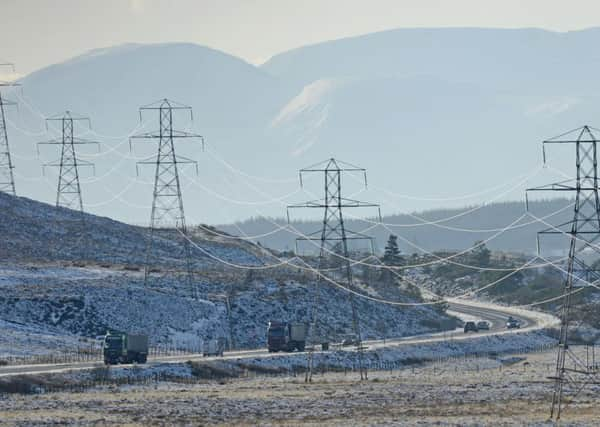A9 dualling will deliver road '˜unfit for future'


Civil engineer Derek Halden said the £3 billion upgrade of the A9 between Perth and Inverness risked being as big a mistake as not dualling the road as part of major improvements in the 1980s.
Halden, who is also secretary of think tank the Scottish Transport Studies Group, said the 80 miles of new dual carriageway could become redundant because less space would be needed for autonomous vehicles.
Advertisement
Hide AdAdvertisement
Hide AdThey are expected to travel close together in “road trains”, with an extra lane needed only around junctions for merging vehicles.
Halden also called for recharging technology to be embedded in the road surface to top up electric vehicle batteries as they drove.
The consultant said: “Investing in the road network requires as fundamental a rethink as took place when cars replaced horses.
“In general, more lanes have helped improve safety and efficiency with manually driven cars, but it may well be that fewer lanes or simpler road configurations could speed up cars and improve safety as we depend more heavily on autonomous vehicles.
“Anyone building a new long-distance route like the A9 dualling project, which will have a lifespan of many years, must plan for the route to be used predominantly by autonomous vehicles.”
Halden said the scheme, due for completion in 2025, could be a global showcase for recharging electrically powered vehicles, which would become dominant.
They could include wireless recharging built into roads, which is already used by buses at stops, and solar panels in carriageway surfaces to generate power.
“Fixing the A9 could be an opportunity to lead the world, but rushing ahead with an A9 dualling programme to a 20th-century design could turn out to be a huge waste of money.”
Advertisement
Hide AdAdvertisement
Hide AdA spokesman for the Scottish Government’s Transport Scotland agency said: “As part of our ambitious plans to dual the A9, we will be considering the issue of charging points for electrical vehicles as we progress the design work.”
He also said a review of the national transport strategy included “looking at ways to promote innovation by assessing the impact of emerging technologies”.
AA president Edmund King said: “There is no doubt we need to be thinking 20 years ahead. If we don’t plan for these developments now, we will be left with 19th-century roads in the 21st century. However, these vehicles will not remove the need for increased capacity – they will potentially enhance mobility for the young, the elderly and the disabled.”
Neil Greig, of the IAM RoadSmart motoring group, said: “Driverless cars will have to cope with current road designs or will inevitably fail.
“A dual carriageway is future-proofing the road. It allows shared use of human and computer-driven cars for at least 25 years and then full driverless operation.”